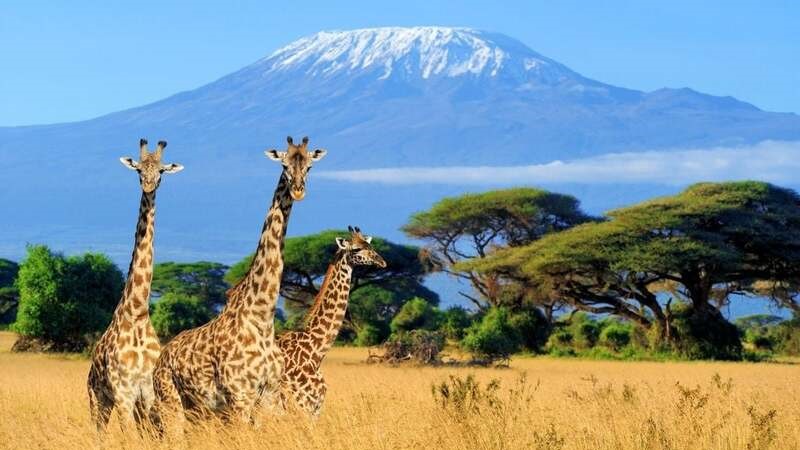Mount Kilimanjaro is a majestic mountain located in northeastern Tanzania, East Africa. It is the highest peak on the African continent and one of the most iconic mountains in the world. Here are some key facts about Mount Kilimanjaro:
- Elevation: Mount Kilimanjaro stands at an impressive height of 5,895 meters (19,341 feet) above sea level. It is classified as a dormant stratovolcano, meaning it is made up of layers of hardened lava, pumice, and ash.
- Location: Kilimanjaro is situated near the border between Tanzania and Kenya, in the Kilimanjaro Region of Tanzania. The mountain is within Kilimanjaro National Park, a UNESCO World Heritage Site.
- Climbing Routes: There are several climbing routes available to reach the summit of Mount Kilimanjaro, each varying in difficulty and duration. Some of the popular routes include the Marangu, Machame, Lemosho, and Rongai routes. The Marangu route is often referred to as the “Coca-Cola” route due to its relatively easier nature.
- Climate and Vegetation: Mount Kilimanjaro is known for its distinct climate zones, including cultivated farmland, rainforest, moorland, alpine desert, and arctic summit. The lower slopes are characterized by dense rainforest, while the upper slopes are more barren and rocky due to the harsher conditions.
- Wildlife: Despite the challenging environment, Mount Kilimanjaro supports diverse flora and fauna. The lower slopes are home to elephants, buffaloes, monkeys, and various bird species. As the altitude increases, animal sightings become less common, but unique plant life can still be observed.
- Trekking and Summit: Climbing Mount Kilimanjaro requires no technical climbing skills, but it does demand physical fitness, mental stamina, and acclimatization to the high altitude. The journey typically takes around 6-8 days, depending on the chosen route, to ascend and descend the mountain.
- Uhuru Peak: The highest point on Mount Kilimanjaro is called Uhuru Peak, which translates to “freedom” in Swahili. Reaching the summit and witnessing the breathtaking sunrise from Uhuru Peak is a remarkable experience for climbers.
- Conservation and Tourism: Kilimanjaro National Park plays a vital role in preserving the mountain’s natural environment. Tourism and climbing activities on the mountain provide significant economic benefits to the local communities and Tanzania as a whole.
It’s important to note that conditions on Mount Kilimanjaro can change, and it is always recommended to seek the assistance of experienced guides and tour operators when planning a climb. Safety precautions and proper acclimatization are crucial for a successful and enjoyable journey to the summit.

